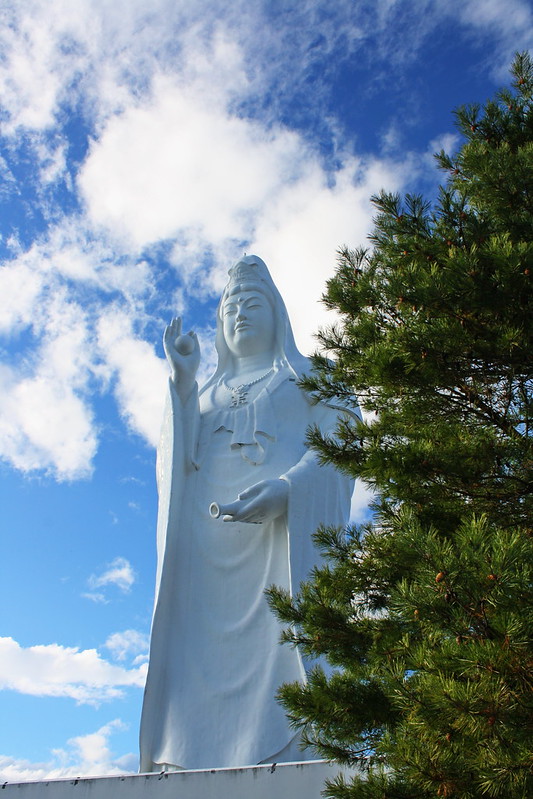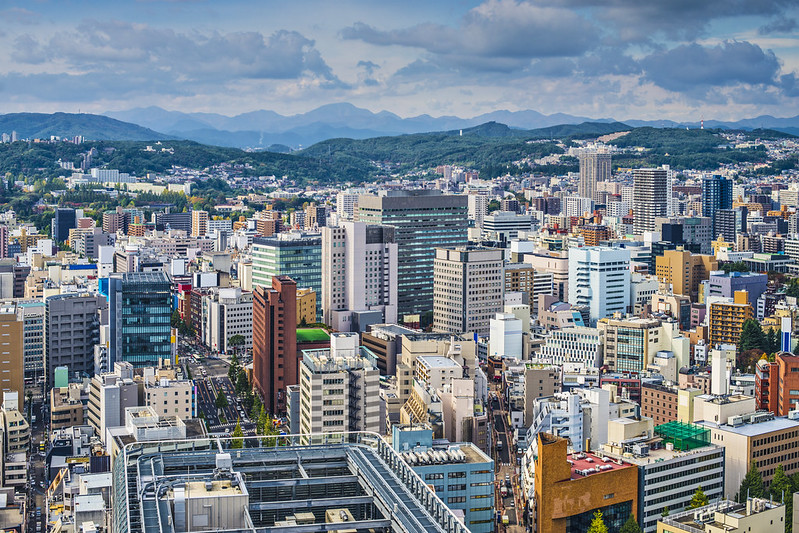
The One-Eyed Dragon of Ōshu and Sendai
Sendai, the capital city of Miyagi Prefecture, is the largest city in the Tōhoku region and is one of the 20 designated cities of Japan with a population of half a million.
Daimyō Date Masamune was ruler of the Tōhoku region during the Azuchi-Momoyama period to the early Edo period. Masamune was known to be an excellent military tactician. He was famous for donning a crescent-moon bearing helmet that won him a formidable reputation. He was made all the more historic with stories of how he lost his one eye. In actuality, he lost the sight on his right eye when he had smallpox as a child. Date Masamune is often known as dokuganryū (独眼竜), or the “One-Eyed Dragon of Ōshu” throughout history.
Daimyō Date Masamune, Japan.
Sendai was inhabited as early as 20,000 years ago but its history as a city began during the 1600’s under the rule of Date Masamune. The One-Eyed Dragon of Ōshu was unhappy with his current stronghold Iwadeyama which was situated in the northern part of his territories. He found it difficult to access from Edo (now Tokyo). Masamune thought Sendai was a better location as it was at the center of all his territories with a major road leading from Edo, close to the sea. Sendai was previously written as 千代 (“a thousand generations”), from the temple with a thousand Buddha statues (千体 sentai) that was previously located in the area. After the Battle of Sekigahara, Tokugawa Ieyasu granted Masamune permission to relocate and build a new castle in Aobayama.
City of Sendai, Tōhoku region.
Masamune then changed the kanji of Sendai to 仙臺 which later on became “仙台” which literally meant “hermit on high ground”. The character of the writings was taken from a Chinese poem that lauded a palace made by the Emperor Wen of Han China (reigned 180–157 BCE), comparing it to a mythical palace in the Kunlun Mountains. Masamune was said to have chosen the kanji so that the castle in Sendai would prosper as long as a mountain that was inhabited by an immortal hermit. On December 1600, construction of Sendai Castle began and the castle towns a year after. The grid plans for the roads of present-day Sendai are still based on Masamune’s original plans.
Sendai is nicknamed the “City of Trees for the 60 zelkova trees found on the streets of Jōzenji and Aoba. Sendai is also famous for the Sendai Daikannon (仙台 大観音), the tallest statue of Nyoirin Kannon in the world and the tallest statue of a goddess in Japan! Standing at 100 metres (330 ft), it is one of the top five tallest statues in the world as of 2018. Sendai Daikannon has an elevator that takes visitors to the top of the statue that represents the “Goddess of Mercy” from Shingon Buddhism.
Sendai Daikannon, Japan.
The Sendai Daikannon bears the wishing gem in her hand making her a version of the Nyoirin Kannon (“Wish-fulfilling Kannon”), drawing many visitors in the hopes of being granted their wishes.


